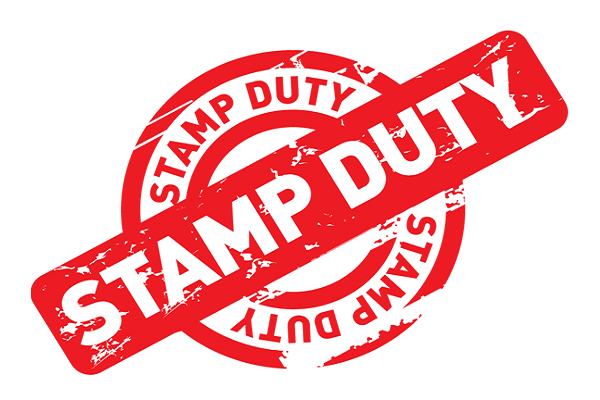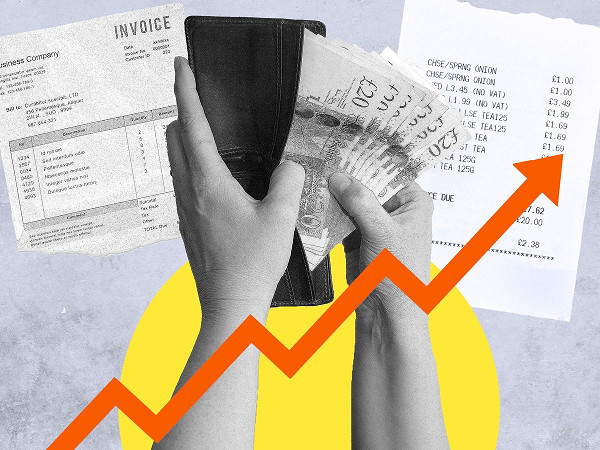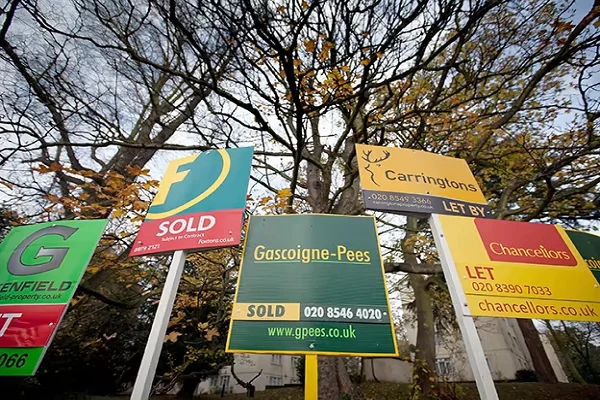Funding A Property Purchase for a Family Member
Bridging finance specialists across the UK have noted an uptick in applications from parents looking to help get their kids on the property ladder. Not that this is particularly surprising when considering the unprecedented difficulties being faced by first-time buyers.
In May, the average house price in the UK hit another record high of £289,099. This represents an increase of more than £2,850 from the previous month or 1%. House prices have now soared to record highs for 11 consecutive months and are up an astonishing 10.5% from the same time last year.
The likelihood of house prices falling over the coming months is minimal, but there are at least signs of a modest slowdown in house price acceleration.
“Yes, prices have still risen 1 per cent on the month, marking the eleventh successive monthly increase, and yes, prices are up by 10.5 per cent on the year, keeping annual price growth in double digits, but this is the slowest rate of growth since the start of the year and shows the challenges ahead cannot be ignored,” commented Alice Haine, Personal Finance Analyst at investment platform Best Invest.
“With mortgage rates surging, following four consecutive interest rate rises from the Bank of England since December and further hikes expected this year, and inflation of 9 per cent eating into real incomes, it is only natural that prospective buyers may take a pause before plunging into the market right now.
“Add in the cost-of-living crisis and the fact fuel prices are now at record highs [petrol prices set a new average record of 178.5p per litre on Tuesday], and the cost of buying a home may deter those already struggling to meet their monthly obligations.”
Insurmountable costs for first-time buyers
Speaking on behalf of Halifax, managing director Russell Galley highlighted how impossibly expensive it is becoming to buy property in the UK.
“For house hunters, the extent of the impact of property price inflation continues to be linked to the type of home they are looking to buy,” he said.
“Compared to May last year, you would need around £10,000 more to buy a flat, but an additional £50,000 for a detached home.”
“This clearly creates a knock-on effect for those looking to make their first home move, as the rungs on the housing ladder have become increasingly wide.”
For first-time buyers, pulling together a ten per cent deposit for an average UK home now means saving at least £30,000. Where lenders insist on 15% or 20% deposits, the figure could be as high as £60,000.
Even last year, when average house prices were lower than today, data from Barclays indicates that the average deposit paid by a sole first-time buyer was £61,100.
This is the kind of money the typical first-time buyer simply cannot come up with. Faced with an escalated cost-of-living crisis, the dream of homeownership for millions of prospective buyers is likely to remain just that.
House prices are up a staggering £123,016 (or 74%) over the past decade, during which wages for many have stagnated.
Tomer Aboody, director of property lender MT Finance, said: “With prices rising by 74% in the past decade, it shows just how much the market is running away from first-time buyers,” commented Tomer Aboody, director of property lender MT Finance.
The bank of mom and dad
Traditionally, parents looking to help their children get on the property ladder have provided financial support in the form of a contribution to their deposit. With deposit requirements at an all-time high, many first-time buyers are finding this the only realistic way to qualify for a mortgage.
Elsewhere, first-time buyers (and their families) are setting their sights on properties away from the conventional housing market. With affordability and accessibility in mind, many are looking to purchase properties in need of renovations and repairs with the aim of gradually moulding them into their dream homes.
This approach has generally proved problematic for first-time buyers seeking funding from mainstream lenders. The vast majority of High Street banks are unwilling to lend against properties in a poor state of repair, which are often categorised as ‘not mortgageable’.
For example, if a property lacks a functional kitchen or a working indoor bathroom, it may be completely out of the running for a conventional mortgage.
This is where bridging finance is proving to be a lifeline for first-time buyers across the country. Bridging loans differ from conventional home loans in that they can be used to purchase any type of property in any state of repair. They are also designed to be repaid as promptly as possible, usually within 1 to 18 months of being issued.
How bridging finance is helping first-time buyers
To understand how parents are using bridging finance to help their children buy their first homes, consider the following everyday example:
- A property is set to go under the hammer at auction for considerably less than its true market value, as it requires considerable repairs and renovations to bring it up to a liveable standard.
- The parents of the first-time buyer take out a bridging loan, using their own home as security for the facility. Bridging finance can be arranged within just a few working days, making it ideal for time-critical home purchases and investment opportunities.
- A bridging loan is provided to cover the full costs of the property and those of the subsequent renovations. The property is purchased at the auction, payment is made in full, and the new owners begin the renovations.
- Several months later, the property has been brought up to an excellent standard and is no longer classified as not mortgageable. The property is remortgaged onto a longer-term repayment facility (like a conventional mortgage), and the bridging loan is repaid.
- In the meantime, the bridging loan will be charged at a rate as low as 0.5% per month, making it a hugely cost-effective product when repaid promptly.
What is important to note about this approach to purchasing a home are three things:
- There is no need to come up with any kind of deposit whatsoever, as no deposit is payable on a bridging loan. This means first-time buyers (with the assistance of their parents) with limited on-hand savings need not be counted out of the running.
- Bridging finance opens the door to the kinds of property purchases that would be out of the question with a conventional mortgage. Particularly when it comes to fixer-upper homes in questionable condition, traditional mortgages are typically unavailable.
- Prompt repayment of a bridging loan can make the transaction in its entirety so much more affordable than arranging any conventional loan or mortgage. Monthly interest can be as low as 0.5%, and all other associated borrowing costs are negligible.
Given the estimated 200,000 properties in England that have stood unoccupied for six months or more, bargain hunters are advised to extend their search beyond the conventional property market.
Flexible finance for homeowners
Bridging finance is also a significantly more flexible and accommodating facility than any conventional mortgage. This can be particularly useful for applicants who are unable to provide formal proof of income or may have imperfections on their credit file.
Likewise, homeowners who are retired and would likely be turned down by high-street banks are also eligible for bridging finance.
Qualification criteria for bridging finance are not nearly as strict as conventional mortgage eligibility checks.
Bridging loans are issued on the basis of the following:
- Ownership of assets of sufficient value to cover the costs of the loan, i.e., the property of the applicant.
- Evidence of a workable exit strategy in reference to how and when the loan will be repaid by the borrower
A good credit score and evidence of a stable financial position will pave the way for a more competitive product. But even with poor credit, no proof of income, and a history of bankruptcy, it is still perfectly possible to qualify for bridging finance.
Consult with an experienced broker
If you are considering taking out a bridging loan to help a member of your family get on the property ladder, independent broker support is highly recommended.
Bridging finance is issued in a variety of forms with different purposes in mind, so it is important to know which type of bridging loan is right for you. Your broker will also be able to advise on the alternative financial products available if there is something that could prove more cost-effective than a bridging loan.
Your broker will negotiate on your behalf to ensure you get an unbeatable deal from a top-rated lender. Many of the UK’s leading bridging specialists offer their services exclusively by way of broker introductions and do not deal with customers directly.
For more information on any of the above or to discuss the potential benefits of bridging finance in more detail, contact a member of the team at UK Property Finance today.
Average London House Prices Hit a New All-Time High in May
The buoyancy of the London property market continued to impress throughout May, with average house prices once again hitting a new record high. Even as the UK’s escalating living-cost crisis was hitting households hard, the average price of a home in London hit an astonishing £526,183, more than 8% up on the previous year.
Detached homes in London saw the biggest annual price growth of all—up just over 11% to reach £1,082,09, compared to £973,866 in May 2021.
However, monthly house price growth in London has slowed significantly, with average property prices for May coming out just 0.2% higher than those of April.
Barking, Dagenham, and Barnet recorded the highest annual property price growth by district, both up by 11.4%.
“With the Bank of England putting up interest rates more than once this year, many house hunters have also established a stronger sense of urgency to buy before further rate hikes,” commented Richard Davies, managing director of London agents Chestertons.
“Our branches receive inquiries from families, couples, and investors, but, particularly post-pandemic, we are seeing an uplift in the number of international students, international buyers, as well as office workers who require a pied-à-terre closer to work.”
Elsewhere, Jeremy Leaf, a North London estate agent, said that much of the market’s explosive performance could be credited to the temporary availability of ultra-low mortgage rates.
“As we are finding at the sharp end, prices are continuing their upward path, despite the impact of 40-year high inflation and five successive interest rate rises,” he said.
“However, the continuing lack of choice, combined with a desire to take advantage of mortgage offers at super-low rates before they expire, have given the market added impetus.”
London is lagging behind the rest of the UK
Even with such explosive annual growth, London continues to lag behind the rest of the country. According to the latest Land Registry figures, average UK property prices for May were up a huge 12.8% compared to the same time last year.
The South West recorded the highest annual house price growth of all, coming out at 16.9% over the course of 12 months.
“As we move into the summer months, it is likely this growth will continue as housing purchases naturally increase at this time of year, inevitably pushing prices up further,” said Stuart Law, CEO of the Assetz Group.
His sentiments were echoed by Yopa Chief Analyst Mike Scott, who believes there is no immediate slowdown on the horizon.
“There is as yet little sign in the figures of the widely expected slowdown in response to increases in interest rates and the cost of living, with the housing market proving to be surprisingly resilient,” he said.
Priced out of contention
While homeowners across the UK continue to reap the windfall of skyrocketing property prices, millions are finding themselves priced out of the market entirely. Particularly in London, home to the highest average property prices in the UK, it is becoming practically impossible for low- and average-income households to relocate to the capital.
New figures released by the Office for National Statistics (ONS) suggest that the average price of a property sold in England (in the year to the end of March) was approximately £275,000. As the average annual disposable household income in England is just £31,800, the average home costs 8.7 times this amount.
Affordability ratios are particularly disproportionate in London, where an average-priced home now costs the equivalent of around 40 years of income for a low-income household.
“The government has a great deal to answer for when it comes to the plight of today’s homebuyer, and the blame can’t be solely placed at the door of one mop-headed buffoon,” said James Forrester, managing director of Barrows and Forrester.
“For years, they’ve insisted on fuelling buyer demand while failing to address the severe reality of the housing crisis by actually building more homes, and this has pushed house prices to record highs.”
“As a result, the initial cost of a mortgage deposit has also spiralled and now acts as a huge financial barrier, preventing many from realising their dream of homeownership.”
With House Prices on the Rise, Millions of UK Residential Homes Move in to Higher Stamp Duty Bracket
The UK has seen more than four million homes for sale moving into a higher stamp duty tax band over the last couple of years, due to the recent house price increase.
Due to demand for properties for sale, house prices have seen a significant increase with the average cost of a residential homes skyrocketing and an average increase of 8.3% in the year to March.
According to a report issued by Zoopla, the average UK house price currently sits at £249,700, equating to a rise of £29,000 since the beginning of the covid pandemic.
March by itself, saw an increase in prices of around £441, and price growth over the last 3 months has seen a level not witnessed since back in 2007.
From the beginning of the pandemic to the end, approximately two years later, the total house price growth is recorded to be a huge 13%.
Despite this impressive increase, these figures are not evenly spread across the UK, with some regions experiencing sharp spikes in property prices, whereas in other areas homes are more affordable. For example, Wales has seen a house price growth of 12.1% whereas, the South West shows a slightly lower increase of 10.6%. London had the lowest growth at a modest 3.6%.
Zoopla’s UK House Price index also revealed a 58% increase in the demand for residential properties in the four weeks running up to the end of April, when compared with the five-year average. The number of agreed sales in the run-up to Easter this year also showed a 27% growth when compared with pre-pandemic levels.
As property prices continue on an upward trajectory, Zoopla have revealed figures estimating that around 3.5 million residential properties in England and Northern Ireland, over the last 24 months, have been pushed into the higher stamp duty tax bracket.
First time buyers have the luxury of not being required to pay any stamp duty on homes up to £300,000 in England and Northern Ireland but a whopping 1.9 million additional homes are now above that mark and are therefore subject to the higher tax.
Scotland and Wales have seen 815,000 properties move into the higher bracket showing significantly lower levels that England and Northern Ireland.
Head of research at Zoopla, Gráinne Gilmore, said: “The rise in house prices since the beginning of the pandemic, due to the demand/supply imbalance, means millions more properties are now in higher stamp duty brackets. But there are pockets of increased supply emerging, creating more choice for buyers in this busy market.”
Senior personal finance analyst at Hargreaves Lansdown, Sarah Coles, added: “The stamp duty holiday had a nasty sting in the tail. Hundreds of thousands of people have actually paid more tax, thanks to the huge hike in house prices fuelled by the tax break.
“These higher tax bills are piling yet more pressure on buyers, who are already facing the stress of rampant house price rises, hikes in mortgage rates and runaway bills, which make it increasingly difficult to cover the cost of the mortgage.
“The turning point may be precipitated by mortgage lenders, who raise rates and factor in higher costs to mortgage affordability calculations – cutting more buyers off from potential loans. Neither is likely to mean price drops, but either could significantly slow the pace of growth as we go through 2022.”
Zoopla’s report revealed that the number of homes available to buy on the market is up by 3% (on the five-year average) with some areas seeing a higher increase than others. Zoopla did warn, however, that it will still take some time for the supply to reach the levels needed, and that stock was currently sitting 40% below the 5-year average.
A 53% increase in supply has been seen in the London boroughs of Chelsea and Kensington, followed closely by a 45% increase in Erewash (East Midlands). Elmbridge in the South East and Pendle in the North West both show increases in stock of 38%.
These levels of increase in demand are starting to stabilise with house prices expected to continue to rise but at a slower pace than has been seen recently.
A 3% growth is expected in December – “but the move from 8.3 per cent to three per cent may not be a linear progression, and it may take into Q1 2023 before price growth hits this level”.
What Are the Biggest Factors Affecting Property Prices in Your Town?
Homeowners looking to get the best possible prices when selling their homes often ask their agents which factors have the biggest influence on house prices. Likewise, those looking to buy homes in the UK question why some properties of a similar specification command exponentially higher prices than others.
Now, research from the Office for National Statistics (ONS) suggests that there are three primary factors that affect property prices more than anything else.
Having studied property prices across a number of towns in England and Wales, the ONS concluded that the three most influential factors on house prices are as follows:
- The distance of the town from London
- The most common types of jobs carried out by the town’s residents
- The level of income deprivation in the town
Specifically, the study conducted by the ONS found that where a town was located within 125 miles of London, each 31 miles further from the city resulted in a property price decline of around £50,000.
Following this initial 125-mile distance, a home’s exact distance from London had less of an effect on its value.
In addition, the ONS reported that a 10% increase in the number of people employed within high-skill-level jobs within a town contributed an average of £25,000 to property prices. This encompasses high-level management positions and occupations that necessitate a degree-level education or higher.
The third of the factors was the proportion of people in the town experiencing deprivation on the basis of low income, which likewise had a major impact on property prices.
Outside the top three, the ONS reported that a town’s distance from the nearest city, the average age of its residents and the size of the town all had an impact on house prices, though to a lesser extent.
The findings followed a previous report from the ONS published late last year, which detailed how average house prices in UK towns in 2020 varied from £1,050,000 in Northwood, northwest London to just £39,000 in Ferryhill, Co Durham.
On average, house prices in the UK have increased by more than 10% over the course of the past 12 months. Regional disparities were clear in the findings, with six of the 10 towns recording the fastest property price growth being in the southeast of England. By contrast, six of the 10 regions with the slowest growth were situated in the northeast.
Average house prices continue to skyrocket across the UK as a whole, pricing millions of potential first-time buyers out of the market entirely. The latest figures indicate that the average price of a property in the UK is now £277,000 – up more than £27,000 on the same period last year.
It now costs around £296,000 to buy a house in England, £205,000 to buy a home in Wales, £181,000 to buy a home in Scotland and £159,000 to get on the property ladder in Northern Ireland.
Average UK House Prices Climb £19,000 in Three Months
Once again, the average asking price for a home in the UK has leapt to an all-time high, having achieved a further 1.6% growth in a single month. According to the latest figures from the Rightmove House Price Index, average property prices in the UK hit £360,101 in April, a significant increase of £5,537 compared to March.
Over the last three months, average asking prices for UK homes have skyrocketed by more than £19,000. This is the highest three-month climb in the history of the Rightmove House Price Index, indicating that the escalating economic crisis is having no impact whatsoever on UK house prices.
Remarkably, the housing market’s performance during the first four months of 2022 has been even more explosive than at any point during the government’s temporary stamp duty holiday. According to Tim Bannister, director of property data at Rightmove, the market’s record-breaking performance continues to be a product of the growing gap between demand for affordable properties and available inventory.
“While growing affordability constraints mean that this momentum is not sustainable for the longer term, the high demand from many buyers chasing too few properties for sale has led to a spring price frenzy, a hat-trick of record price months, and the largest price increase for three months Rightmove has ever recorded,” he said.
No sudden slowdown on the horizon
Mr Bannister went on to say that while an eventual slowdown may be inevitable, it will almost certainly be gradual, far from a ‘burst bubble’ as some had predicted.
Elsewhere, Geoff Garrett, director of Henry Dannell, stated that home sellers and buyers alike should be braced for turbulent times ahead.
“While we don’t expect to see market activity evaporate completely, the growing cost of living will be a significant factor in the months to come, and as household finances are stretched, prospective buyers will likely ease off on the sums they’re willing to offer,” he said.
“As a result, sellers will need to realign themselves with these changing market conditions, and this will cause the rate of house price growth to cool.”
Data published by Rightmove indicated that more than 50% of all homes being sold in the UK are selling for their full asking price or higher. This is, again, a record high for the company’s House Price Index.
The average time it takes for a seller to find a buyer for their home is currently just 33 days—less than half the time it took to sell a home on average in 2019 when the average was 67 days.
“Over 125,000 new sellers have taken advantage of the great sellers’ market this month, but more are needed in all areas and in all property sectors to meet high buyer demand,” added Bannister.
Meanwhile, Christina Melling, chief executive at digital professional service provider Stipendium, highlighted the extent to which skyrocketing property prices are making it even more difficult for newcomers to find their way on the UK’s increasingly elusive property ladder.
“Unfortunately, it’s the nation’s first-time buyers who are paying the price, and those looking to take that first step are now paying £2,000 more for the pleasure compared to just one month ago,” she said.
“It’s yet another brick in an already substantial financial wall that’s blocking many from realising their dreams of homeownership.”
Rising House Prices and Equity Increases for Homeowners Sparks a Growth in the Second-Charge Loans Market
As the average cost of a home in the UK continues to rise, homeowners are reaping the benefits of the additional equity in their properties and finding financing options more readily available to them than they were before.
The Nationwide Building Society has released data showing a 14.3% rise in house prices since March 2021, benefiting many homeowners who are seeing a significant increase in the equity they have in their property.
Nationwide’s data, tracked over a two-year period, shows that since the early days of the pandemic (March 2020), the average value of a home in the UK has risen by a remarkable 21%. As an example, a property that was valued at £300,000 at the beginning of the first lockdown could now be worth as much as £363,000.
Wales has seen the biggest increase in property prices, reporting an annual increase of 15.9%, according to Nationwide’s statistics.
With the expectation that house price growth will slow down in the months to come, the Royal Institute of Chartered Surveyors is still confident that there will be further increases this year.
Borrowers looking for second-charge loans are finding it easier due to the added equity available in their homes due to the price increases. The more equity they have, the more they can lend, and the better the interest rates available to them will be. This could be a great opportunity for people looking to consolidate debt and get their finances in order, which, in the current climate, is advisable.
But second-charge loans or remortgaging are not purely for people looking to consolidate; the market is seeing a rise in the number of prime borrowers accessing the equity in their properties. This increase is not surprising when looking at the record low-interest rates for fixed 5-year first-charge loans in the last few years.
These borrowers may have committed themselves to a mortgage that has a heavy ERC (early repayment charge) if they wish to switch mortgages. Taking out a second-charge loan could be more beneficial and cheaper in this circumstance, as the first-charge loan would remain in place.
Five-year fixed-term mortgages have seen a surge in popularity over the last five years. Over 50% of the home loans approved by Santander recently were reported to be five-year fixed-term mortgages.
Moneyfacts released data showing that the average interest rate on a five-year fixed-term mortgage was around 2.88% in March 2022, which is not a long way from the figure back in March 2017, which sat at 2.93%. However, it was up from the February 2022 figure of 2.71%.
Those with credit card debt and the self-employed may also find more doors open to them in regard to second-charge loans and may be eligible for the first time due to the added equity available for release in their homes.
These borrowers may not be eligible to apply for additional funds from their first charge lender and may have issues with their credit history, for example, if they hit hard times during the pandemic. With the added equity, it is likely that they will have more access to remortgaging and second-loan finance products.
Banks Get Tough on Home Loan Applications as Cost of Living Skyrockets
With inflation spiralling and the cost of living on the rise, banks and mortgage lenders have responded by tightening the application process and putting more emphasis on affordability testing.
April saw banks, such as Santander, increase their lending criteria with stringent new affordability parameters. Other banks, such as HSBC, Lloyds, and NatWest, are predicted to follow suit and make it more difficult for potential buyers to be accepted for a mortgage. Many will have to accept a smaller loan than they would otherwise have wanted.
With household bills rising due to energy cost hikes, increases in inflation, and fuel prices going through the roof, many people are finding their income squeezed to capacity. Banks are taking these additional financial burdens into account when approving buyers for home loans, resulting in many applications being rejected.
This signifies the biggest clampdown on mortgage application acceptance in more than ten years.
Mortgage brokers are warning home buyers that the increased monthly outgoings, coupled with the recent tax increases, are prompting the lending market to be more cautious about who is approved for finance, meaning that they will need to be realistic about the amount that they will be able to borrow in the current climate.
Santander led the way by increasing the criteria of its affordability test early in April but stating that the changes reflect the changes in the average household bill. The largest high-street banks are expected to follow soon.
Buyers looking at their dream home will find it; they may have to limit their expectations regarding the size of the property they will be able to buy, particularly those with credit card debts. Loan debt and divorcees who will need to pay out their exes will be penalised under the new stringent affordability test.
The previous clampdown was seen in 2014 but was not as harsh as the one expected to be implemented now and in the near future.
Ray Boulger, a senior analyst at broker John Charcol, said: ‘It is the biggest tightening [in mortgage lending] since 2009 because interest rates are increasing, and we are experiencing the largest rise in the cost of living since the 1980s.’
‘The difference between now and 2009 is that banks had a huge shortage of funds then, whereas now the issue is that it’s more difficult for some people to borrow.’
One banker said, ‘Some lenders are already changing affordability tests behind the scenes to try to mitigate the cost of living issues we’re starting to see.’
Many lenders use the Office of National Statistics to gain data in order to judge borrowers spending. This does not take into account the fact that an applicant’s individual outgoings may be lower than average but is used as a general yardstick to see if borrowers can afford the mortgage that they are applying for.
The ONS figures will shortly include the rising cost of energy, making it even more difficult for buyers to get home loans.
Santander announced that they will be taking the increased gas and electricity costs, national insurance contributions, and various tax rates into account when looking at affordability testing. They will be particularly looking at increasing the stress test for five-year fixed home loan deals, making them more difficult to get.
Andrew Montlake, of mortgage broker Coreco, said: ‘We’re starting to hear whispers of banks tightening affordability checks. All the lenders are talking about it. You can see a situation where some people can’t borrow what they need, which means they’ll have to look at cheaper property in cheaper areas.’
‘I suspect we’ll see some people miss out, especially those in need of large loans with small deposits.’
Other banks are continually reviewing the market conditions and will soon follow suit.
Barclays said: ‘We continuously monitor the cost of living, accommodating changes where appropriate within our core affordability models and assumptions on an ongoing basis.’
The affordability test generally checks to see if the buyers can afford to make payments at a standard variable rate plus an additional 3%. Tougher stress tests may also affect house prices.
Russell Galley, a managing director of Halifax, said: ‘Buyers are dealing with the prospect of higher interest rates and a higher cost of living.’
‘With affordability metrics already extremely stretched, these factors should lead to a slowdown in house price inflation over the next year.’
UK’s Changing Property Market: How Brokers Need to Adapt
Over the past five years, the housing market in Britain has seen many changes, prompting a warning to brokers that they need to adapt and rethink the way they do things.
The impact of Brexit, followed closely by the COVID pandemic, and now the spiralling cost of living on the shape of the property market cannot be underestimated.
Graham Hayward, chief operating officer at rental guarantor service Housing Hand, said: “This means brokers will have to rethink their model, as where they sit in the marketplace, they are being challenged and squeezed.”
The advice to brokers is to ensure their model is more digital to keep in line with government legislation, which is certainly moving in this direction.
There is clear evidence that the buy-to-let market is seeing a dip with the continuing rise in inflation and the cost of living, making affordability more challenging.
Marc Schneiderman, director of Arlington Residential, said: “We are still seeing strong competitive bidding from buyers keen not to miss out.”
“However, there is undoubtedly a sense that the market may be cooling down. A rise in interest rates, high inflation, fear of further increases in the cost of living may all contribute to a slowdown, in particular in the sales market.”
The lack of housing stock is also having a direct effect on the prices of homes, resulting in escalating purchase prices and rental rates.
Tomer Aboody, director of property lender MT Finance, added: “Rising interest rates could help curb the uptick in property prices should they get to such a level that borrowers can no longer afford the mortgages they need to purchase these homes.”
“This would reduce demand and, in turn, slow down the pace of price growth.”
The expectation is that the number of people unable to buy property and forced to rent will continue to expand, adding to the problem of a lack of supply of private rental accommodation on the market.
Hayward added: “The UK market flattened during COVID and Brexit, but the purpose-built student accommodation market is coming back, and build-to-rent is thriving and expanding at an alarming rate.”
“The changing demographics, with less overseas influence among renters and an increasing shift towards servicing UK renters, have meant that generation rent is expanding as the ability to buy houses is becoming limiting.”
“Generation rent is not going away, and their requirements for renting have changed, as they want the full experience, demanding more for their money.”
There are regional differences when it comes to buy-to-let. In London, you can expect a yield of 3% to 4% annually, while in Glasgow’s West End, where real assets are readily available, you can see a yield of 6% in a year.
John O’Malley, chief executive of Glasgow-based Pacitti Jones, added: “Currently, sales prices in Glasgow aren’t ”broken” – people have just decided to put more value into where they live.”
“The house price index in Glasgow has risen by 10% throughout 2021, and we’re told that inflation will peak at between 7-8 % CPI, so it’s not running rampantly ahead of inflation.”
“When people are worried about inflation, they like to invest in real assets, and real assets provide a good asset class.”
Jeremy Leaf, former RICS residential chairperson, commented: “In many ways, what is happening in the sales market is being mirrored in lettings.”
“Shortage of stock remains on both sides, while demand remains strong, even though inflation reached a 30-year high, and many are facing a record drop in living standards, according to the government’s own financial watchdog.”
He also noted that the latest figures from the ONS (Office of National Statistics) show rental growth at its highest in five years, at 2.3% per year, but on the other hand, buying a property now requires 9.1 times income, whereas it was 7.9 times just a year ago. The average house price currently sits at a record-breaking £273,762.
Leaf added, “These eye-watering numbers have prompted fears of an affordability crisis.”
“However, the purchasing power of savings is still driving activity while the pandemic-inspired race for space is not yet finished, so we don’t expect a sharp correction for the rental or sales markets.”




 0116 402 7982
0116 402 7982







